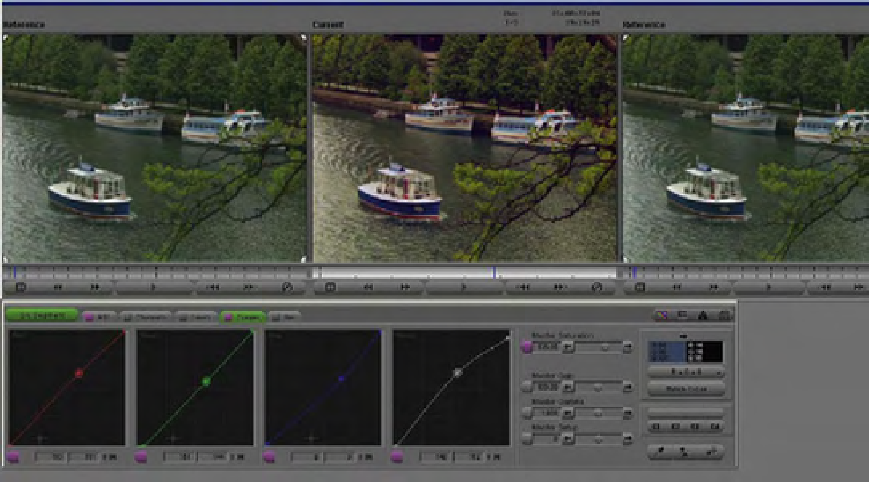Graphics Reference
In-Depth Information
“My first step would be to get down to black with at least one of the
colors, whichever is the lowest,” Curren explains as he uses the Master
Curve to drop blacks down overall. “Then bring the others down. In this
case, the blacks are a little green. I can instantly look and see the bulk of
the image is here,” he says, as he points to the bottom of the RGB Parade.
“I can see that in the picture too,” he says, pointing on the monitor to the
dark water.
“The gamma needs to be bumped, so I can grab that and I'm bringing
up the gamma and not the blacks or the top (highlights) any. I can see
that the overall picture has a blue tint to it. For most scenes, in the gamma
on the RGB parade it goes like that,” he says placing a pen across the RGB
Parade shapes in the gammas, showing a slight downward angle from the
red to the blue side of about 10 to 15 degrees. “In other words, it's not
equal red, green, and blue in the middle. But the RGB here is straight
across the gammas. So I can see that the blue gamma is high and reds are
a little low. That warms the image up a bit. If I wanted to, I could go into
the secondaries and pull out some of the green in the water or make it
really
green” (
Figures 7.77
and
7.78
).
Fig. 7.77
Curren's screenshot of his curves correction shows his primary correction in the center and the source image on either side.
The master saturation has been increased, but all other color correction was done with the four curves. This correction took less than 30
seconds.

Search WWH ::

Custom Search